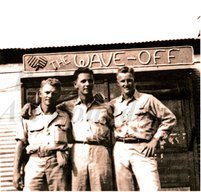
|

|
|
|
|
John was born in a house on Southern Avenue in Shreveport, as one of two sons of John B. and Nita Whited Greer. Soon the family moved to 1815 Line Avenue, where young John grew up. The elder Greer worked for Gulf Oil Company, then co-founded Clark and Greer Drilling Company in the early 1900s. Young John recalls a boyhood of riding bicycles, swimming, and running "a lot just out of pure exuberance." He also recalls attending silent movies at The Strand Theatre. After graduating from Byrd High School in 1933, he attended Sewanee Military Academy in Sewanee, Tennessee, then transferred to the University of Texas. He returned to Shreveport and enrolled at Centenary College, where he met Patricia Bartmess. His next stop on his educational tour was California Institute of Technology in Pasadena where he enrolled in the Civil Air Training Program. There he earned commercial and private pilot's licenses. He and Patricia married on June 28, 1941, and would have four children and three grandchildren. After America's entry into World War II, John continued training while enlisting in the U.S. Navy. Standing only five-feet, four inches tall, John had to get a height waiver to enter the service. Despite his piloting capabilities, John had to report to Pensacola, Florida, in August of 1942, where he went through the entire flight-training program. He served as a primary flight instructor for a year in Dallas, then trained in DC-3s in Fort Worth. His instructors were American Airline pilots, whom he calls "the best flyers that I flew with anywhere." After a short stay at Oakland Naval Air Station, John was assigned to Naval Air Transport Service in Honolulu. There, as command pilot of a DC-4, he flew both personnel and freight to areas around the Pacific, including recently secured battlefields, such as Kwajalein and Iwo Jima. He landed in Okinawa as the battle raged. Flights, he recalls, were often 10 to 15 hours long. He often flew at night, using both celestial and Long Range Aid to Navigation (LORAN) systems. Near the end of the war, John was transferred to Squadron BRE-1, a Guam-based evacuation unit. On one of his last flights he picked up prisoners of war at Kisarazu Naval Air Station. John was discharged in Oakland, California, in January of 1946. Back in Shreveport he sold real estate and dealt in oil leases. |


